Common Names: Pokeweed, Poke root, Pigeon berry
Scientific Binomial Name: Phytolacca decandra, P.americana
Plant Family: Phytolaccaeae
Part Used: Roots & berries
Habitat & Cultivation: Native to eastern North America from Maine to Florida and westward to Minnesota and Texas. Poke grows in dry fields, on hillsides and roadsides. Enjoys full sun to partial shade and prefers moist rich soil but will adapt to dryer conditions.
It is rare and exciting to find pokeweed in a dietary supplement formula. Only experienced and skilled practitioners work with this plant due to its strength. This is just another reason Dr Morse is such a unique formulator – he is not afraid to work with low dose herbs to support the body’s natural detoxification process on the deepest level possible. Pokeweed is a go-to for supporting stubborn congested lymph when all other herbal remedies fall short.
Pokeweed “is regarded as one of the most important of indigenous American plants (M. Grieve)” for its ability to support stagnant lymph. It was so popular among indigenous peoples and later European settlers that it earned a place in the US Pharmacopia from 1820-1916. In this article, we will discuss the importance of pokeweed: a polarizing plant, which holistic practitioners both fear for its potential toxicity and revere for its therapeutic potential.

Introducing Pokeweed
Imagine coming across a plant that towers over your head, with ripe deep purple berries growing in clusters off shockingly magenta stems. With pokeweed growing to heights of 12 feet, this beautiful plant is hard to miss. Pokeweed is native to eastern North America from Maine to Florida and westward to Minnesota and Texas.
American Pokeweed is a prolific perennial plant once established, with large fleshy roots spreading rapidly and hearty seeds sown by the various birds that dine on its berries such as northern mockingbirds, brown thrashers, eastern bluebirds, American crows, cardinals, starlings and red-bellied woodpeckers.
The stems range in color from green to pink to deep magenta. The flowers can range from green to white to pink, blooming from May to October and once pollinated produce large purple-black berries arranged in drooped clusters on short stems.
Poke leaves can grow up to 20 inches long. The young shoots have historically been prepared as a dish known as poke sallat in the south and have been likened to asparagus, BUT this is a very tricky dish to get right, and if it is not prepared correctly, it will land you in the hospital.

Pokeweed History and Traditional Uses
Being native to the southeastern United States, much of poke’s traditional uses have been passed down to us from indigenous peoples of North America. According to the AIHDP, Delaware Indians, Pah-Utes, and tribes in Virginia and the Rocky Mountains used poke in various ways: as a cardiac stimulant, poultice, nervous system suppressant and smooth muscle relaxant.
The root, berries, and mature stalks of pokeweed are poisonous. That being said, all parts of the plant have been used historically as food and medicine. How is this possible? It is all in how you prepare and DOSE this herb. The young shoots are eaten as salad, but only once they have been boiled multiple times. The boiled poke water is discarded, and they are re-boiled again and again (5-6 times total) using fresh water each time. This implies that at least some of the toxic phytochemicals in the young shoot are water soluble.
Traditional Herbalists dose one poke berry (and NO MORE) to support the flow of congested lymph. The root is also traditionally employed for supporting this same eliminatory channel, but it must be dosed very low to avoid poisoning. Challenging topical skin imbalances have been linked to the liver skin eliminatory pathway, and pokeweed is the ideal herbs for supporting the clearing out of this eliminatory channel.
Modern formulas and protocols that include poke root in small amounts support the mammary glands in breastfeeding adults, lymphatic decongestion along the liver to skin eliminatory pathway, and a healthy immune and inflammatory response. Poke has a special affinity for the respiratory, reproductive, digestive and integumentary systems.
“This is a valuable herb that must be treated with respect (Bone & Mills, p. 795).”
Poke Toxicity, Dosing and Protocols
The conversation around dosing this powerful and toxic herb is multifaceted, and we strongly recommend only using this herb under the guidance of a trained healthcare professional. Poke is a prolific weed in North America, and with its use in traditional herbal remedies and foods, there are unfortunately many documented cases of poisoning and death due to overconsumption of any part of poke in both children and adults.
Referencing the extensive pokeweed monograph in Kerry Bone and Simon Mills’ text Principles and Practices of Phytotherapy, the safe use range for adults of the liquid extract of poke is 0.7 milliliters (700 mg) per day, and no more than 0.2 grams (200 milligrams) of the dried root. This herb should not be used on children.
Herbs are categorized into terms of use based on how they act in the body: short-term use, medium-term use, and long-term use. Poke is classified as a medium-term use herb and should not be used for periods longer than 6 months at a time (Bone & Mills, p. 795).
It is difficult to find large scale herbal supplement companies that still formulate with pokeweed as it is an herb that requires special care and awareness when consumed. Dr Morse’s Herbal Health Club is a community of healers and self-aware humans that get the unique opportunity to still enjoy pokeweed in formulas. Dr Morse understands the importance of pokeweed for supporting the decongestion of lymph, and includes it in Lymphatic System 1, Lymphatic System 3 & Lymphatic System 4.
*FDA warning: This statement has not been evaluated by the Food and Drug Administration. This product is not intended to diagnose, treat, cure, or prevent any disease.


